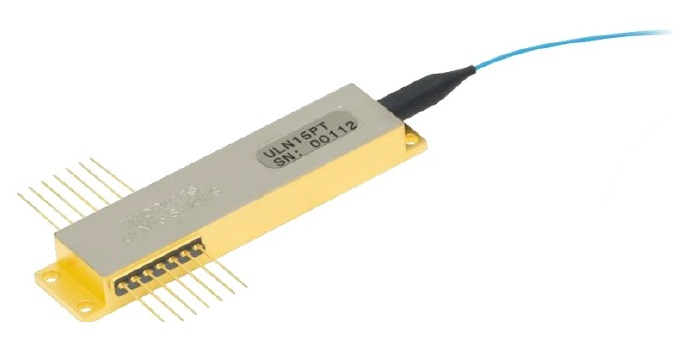Thorlabs has announced the release of its ultra-low-noise semiconductor laser product line, which offers an unrivaled combination of high output power (> 100 mW), narrow linewidth (< 100 Hz), and ultra-low relative intensity noise (RIN < -165 dB/Hz). Based on a patented Fiber Bragg Grating (FBG) external cavity design, these lasers provide output centered at 1550 nm.
 ULN15PT: 1550 nm Ultra-Low-Noise Semiconductor Laser with PM Fiber and Temperature Tuning
ULN15PT: 1550 nm Ultra-Low-Noise Semiconductor Laser with PM Fiber and Temperature Tuning
“These ultra-low-noise lasers build on Thorlabs’ class-leading semiconductor gain chip to offer a unique combination of high output power, low phase noise, and low RIN for demanding applications in remote sensing, optical comb generation, and RF/microwave photonics,” said Jian Wei, Director of Semiconductor Components at Thorlabs’ Quantum Electronics facility in Jessup, MD.
Commercialized in collaboration with Morton Photonics, Inc., each laser is packaged in an extended 14-pin butterfly housing featuring two thermoelectric cooler elements for precise laser and FBG control and stabilization. Offered in both polarization maintaining and single mode fiber variants, these lasers can be optimized for wavelength tuning by temperature or current depending on the application.
“I am thrilled to see the release of the ultra-low-noise produce line,” said Paul Morton, CEO & Founder of Morton Photonics. “Thorlabs has been an excellent partner committed to bringing state-of-the-art semiconductor laser products to both research and commercial markets. We look forward to continued collaboration, such as supporting wavelength division multiplexing (WDM) as well as extending this product line to other wavelength bands. The latter will provide sensing markets with higher performance, lower cost, and more reliable semiconductor laser solutions and also support emerging applications in atomic physics and quantum information processing.”
Our ultra-low-noise lasers join Thorlabs’ extensive offering of single frequency lasers, which span wavelengths from 671 nm to 11 μm.